Will Dunn in New Statesman:
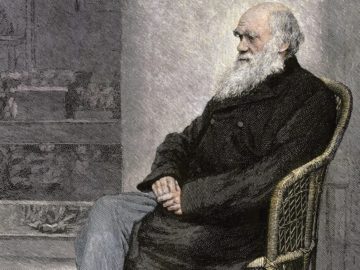 “If I have seen further,” Isaac Newton wrote to his fellow scientist Robert Hooke in 1675, “it is by standing on the shoulders of Giants.” Long seen as our greatest scientist’s greatest line, it may have been a sarcastic joke: Hooke, a rival who had claimed credit for Newton’s discoveries and whom Newton came to dislike intensely, was a short man. It was true, however, that Newton was supported by people who remained unseen. This was very much the case with his finances: Newton was an investor in the slave trade. He bought thousands of shares in the South Sea Company, the principal enterprise of which was to transport people from Africa to the Americas. Newton invested in this business for over a decade, making a significant profit (and then losing it in the crash of 1720).
“If I have seen further,” Isaac Newton wrote to his fellow scientist Robert Hooke in 1675, “it is by standing on the shoulders of Giants.” Long seen as our greatest scientist’s greatest line, it may have been a sarcastic joke: Hooke, a rival who had claimed credit for Newton’s discoveries and whom Newton came to dislike intensely, was a short man. It was true, however, that Newton was supported by people who remained unseen. This was very much the case with his finances: Newton was an investor in the slave trade. He bought thousands of shares in the South Sea Company, the principal enterprise of which was to transport people from Africa to the Americas. Newton invested in this business for over a decade, making a significant profit (and then losing it in the crash of 1720).
Art cannot exist without its creator, whatever else they may have thought or done. But knowledge – especially the natural laws of physics and mathematics – is discovered. Why mark it with the personal lives or beliefs of the individuals who found it? As the historian James Poskett points out in Horizons, which tells the story of the global roots of modern science, there are many good reasons to do just that. The call to “decolonise” subjects by acknowledging their cultural context is seen by some as needlessly political, but Poskett argues that science was already politicised. The idea that scientific revolutions are the preserve of the European male genius – Newton, Darwin, Copernicus, Galileo, Einstein – is, he argues, a political project to reinforce the idea that people who support a particular system of government, or live on one side of a border, are more curious, inventive and adept than others.
More here.

 Hypomethylating agents (HMA) are currently used as a first-line treatment for patients with myelodysplastic syndrome (MDS), and increasingly in other diseases, but their mechanism of action is not clear. HMAs may affect many genes and could potentially activate an oncogene—a gene that contributes to the development of cancer—but this has not been clearly demonstrated to date. To test this, investigators from Brigham and Women’s Hospital, Harvard Stem Cell Institute and collaborators studied how HMA affects known oncogenes. They found that HMA activated the oncofetal protein SALL4 in up to 40 percent of
Hypomethylating agents (HMA) are currently used as a first-line treatment for patients with myelodysplastic syndrome (MDS), and increasingly in other diseases, but their mechanism of action is not clear. HMAs may affect many genes and could potentially activate an oncogene—a gene that contributes to the development of cancer—but this has not been clearly demonstrated to date. To test this, investigators from Brigham and Women’s Hospital, Harvard Stem Cell Institute and collaborators studied how HMA affects known oncogenes. They found that HMA activated the oncofetal protein SALL4 in up to 40 percent of 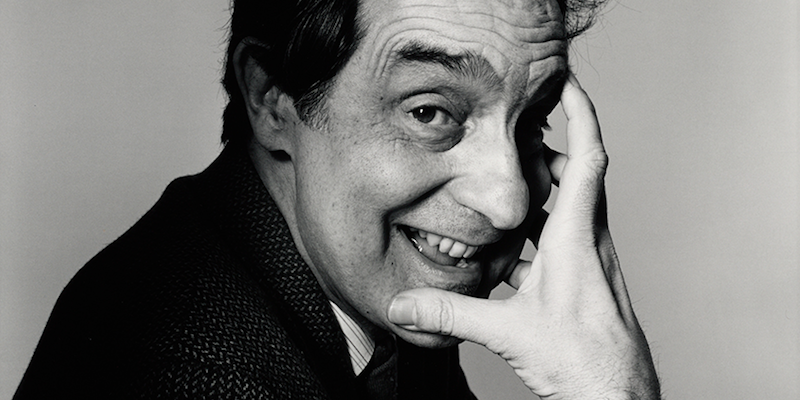 To speak of Italo Calvino’s popularity outside of Italy is to speak of Calvino in translation, given that he has been read and loved abroad in other languages and not in Italian. For an author who floats, as Calvino himself said, “a bit in mid-air,” translation—that twofold and intermediate space—was his destiny.
To speak of Italo Calvino’s popularity outside of Italy is to speak of Calvino in translation, given that he has been read and loved abroad in other languages and not in Italian. For an author who floats, as Calvino himself said, “a bit in mid-air,” translation—that twofold and intermediate space—was his destiny. The origin of life here on Earth was an important and fascinating event, but it was also a long time ago and hasn’t left many pieces of direct evidence concerning what actually happened. One set of clues we have comes from processes in current living organisms, especially those processes that seem extremely common. The Krebs cycle, the sequence of reactions that functions as a pathway for energy distribution in aerobic organisms, is such an example. I talk with biochemist about the importance of the Krebs cycle to contemporary biology, as well as its possible significance in understanding the origin of life.
The origin of life here on Earth was an important and fascinating event, but it was also a long time ago and hasn’t left many pieces of direct evidence concerning what actually happened. One set of clues we have comes from processes in current living organisms, especially those processes that seem extremely common. The Krebs cycle, the sequence of reactions that functions as a pathway for energy distribution in aerobic organisms, is such an example. I talk with biochemist about the importance of the Krebs cycle to contemporary biology, as well as its possible significance in understanding the origin of life.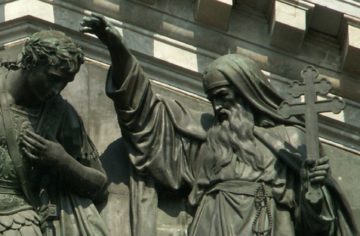 Great civilizations can wither—even when built on the material and human foundations of a potential superpower. Today the civilizations of India, China, the West, and Islam are all in jeopardy. But what has happened to Russia, the world’s largest state and fulcrum of Eurasia? Tsarist Russia, for all that was cruel and backward about it, had redeeming features. It gave rise to some of the greatest music, dance, and literature in human history—a flowering that struggled for air in Soviet times but has nearly stopped breathing under Vladimir Putin’s petrostate.
Great civilizations can wither—even when built on the material and human foundations of a potential superpower. Today the civilizations of India, China, the West, and Islam are all in jeopardy. But what has happened to Russia, the world’s largest state and fulcrum of Eurasia? Tsarist Russia, for all that was cruel and backward about it, had redeeming features. It gave rise to some of the greatest music, dance, and literature in human history—a flowering that struggled for air in Soviet times but has nearly stopped breathing under Vladimir Putin’s petrostate. CHRIS KRAUS DID NOT LOVE KATHY ACKER, did not even “like” her, though love and like are mean props in the perpetual war of letters. Kraus did think that this woman, who had slept with her (eventually ex-) husband (Sylvère Lotringer), was “kind of frightening and awesome.” Lotringer of course founded Semiotext(e), the publishing house that Kraus still helms with him and Hedi El Kholti, which also published Acker’s e-mails to Wark cited above and Kraus’s debut novel (I Love Dick,1997) as well as her most recent book (After Kathy Acker, 2017). “To Sylvère, The Best Fuck In The World (At Least To My Knowledge) Love, Kathy Acker,” reads an inscription in a book Kraus finds in Sylvère’s library in I Love Dick. “Pretty stiff competition,” Kraus says. Although Kraus was present for Acker’s life, even inspired by her work, she is not what you would call a “partisan,” and because of this she has written the smartest, cruelest, most intimately clinical, which is to say the best, biography of Acker one could hope for.
CHRIS KRAUS DID NOT LOVE KATHY ACKER, did not even “like” her, though love and like are mean props in the perpetual war of letters. Kraus did think that this woman, who had slept with her (eventually ex-) husband (Sylvère Lotringer), was “kind of frightening and awesome.” Lotringer of course founded Semiotext(e), the publishing house that Kraus still helms with him and Hedi El Kholti, which also published Acker’s e-mails to Wark cited above and Kraus’s debut novel (I Love Dick,1997) as well as her most recent book (After Kathy Acker, 2017). “To Sylvère, The Best Fuck In The World (At Least To My Knowledge) Love, Kathy Acker,” reads an inscription in a book Kraus finds in Sylvère’s library in I Love Dick. “Pretty stiff competition,” Kraus says. Although Kraus was present for Acker’s life, even inspired by her work, she is not what you would call a “partisan,” and because of this she has written the smartest, cruelest, most intimately clinical, which is to say the best, biography of Acker one could hope for.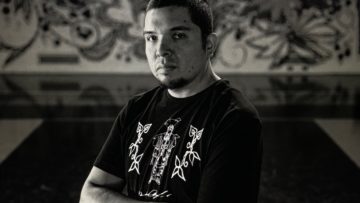 The record is an unusual proposition: A rare fusion of pow wow—an Indigenous culture of music and dance—and experimental electronic production that pairs Rainey’s singing with Broder’s synths and wildly abstract beats. Holding it all together are sampled live recordings of pow wow singing and drumming stretching back decades, many of them made by Rainey himself.
The record is an unusual proposition: A rare fusion of pow wow—an Indigenous culture of music and dance—and experimental electronic production that pairs Rainey’s singing with Broder’s synths and wildly abstract beats. Holding it all together are sampled live recordings of pow wow singing and drumming stretching back decades, many of them made by Rainey himself. Human-induced climate change made the deadly heatwave that gripped India and Pakistan in March and April 30 times more likely, according to a
Human-induced climate change made the deadly heatwave that gripped India and Pakistan in March and April 30 times more likely, according to a 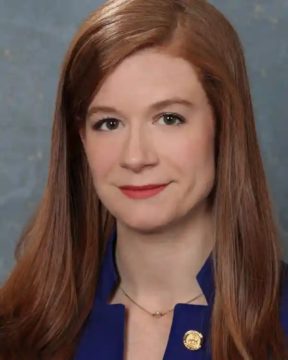 Mallory McMorrow
Mallory McMorrow Pity literary biographers. There are few writers less appreciated, there are none more despised. There they sit, with their church bulletins of family trees and their dental records, their interviews with ex-lovers, mad uncles, and discarded children, and go about “reconstructing” the life of someone they never knew, or knew just barely. To George Eliot, biographers were a “disease of English literature,” while Auden thought all literary biographies “superfluous and usually in bad taste.” Even Ian Hamilton, the intrepid chronicler of Robert Lowell, J. D. Salinger, and Matthew Arnold, thought that there was “some necessary element of sleaze” to the whole enterprise.
Pity literary biographers. There are few writers less appreciated, there are none more despised. There they sit, with their church bulletins of family trees and their dental records, their interviews with ex-lovers, mad uncles, and discarded children, and go about “reconstructing” the life of someone they never knew, or knew just barely. To George Eliot, biographers were a “disease of English literature,” while Auden thought all literary biographies “superfluous and usually in bad taste.” Even Ian Hamilton, the intrepid chronicler of Robert Lowell, J. D. Salinger, and Matthew Arnold, thought that there was “some necessary element of sleaze” to the whole enterprise. Both countries are English-speaking democracies with similar demographic profiles. In Australia and in the United States, the
Both countries are English-speaking democracies with similar demographic profiles. In Australia and in the United States, the 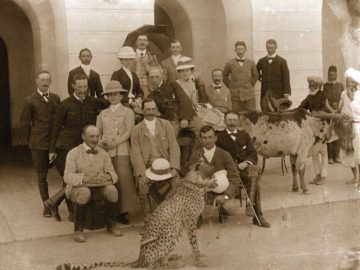 In 2005, Britain’s then–Labour chancellor of the exchequer, Gordon Brown, chose the backdrop of Tanzania to make a dramatic statement about his nation’s unmatched record of imperial conquest and rule. “The time is long gone,” he said, “when Britain needs to apologize for its colonial history.” The choice of locale for such a proclamation was, to be charitable, curious. A braver stage would have been Kenya, to pick an African nation that had experienced horrific violence during its independence struggle from British colonial rule, or India or Malaya, where extreme and brutal measures to sustain imperial control had been carried out on an even greater scale. But here we were, nonetheless.
In 2005, Britain’s then–Labour chancellor of the exchequer, Gordon Brown, chose the backdrop of Tanzania to make a dramatic statement about his nation’s unmatched record of imperial conquest and rule. “The time is long gone,” he said, “when Britain needs to apologize for its colonial history.” The choice of locale for such a proclamation was, to be charitable, curious. A braver stage would have been Kenya, to pick an African nation that had experienced horrific violence during its independence struggle from British colonial rule, or India or Malaya, where extreme and brutal measures to sustain imperial control had been carried out on an even greater scale. But here we were, nonetheless.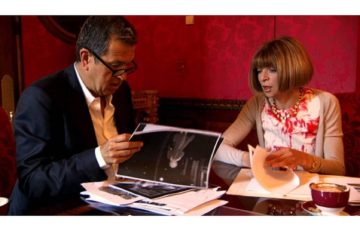 Apparently Anna Wintour wants to be seen as human, and Amy Odell’s biography goes some way to helping her achieve that aim. Nearly all the photographs show her smiling, looking friendly, even girlish. And the text quite often mentions her crying. On 9 November 2016 she cried in front of her entire staff because Hillary Clinton lost the election. But then she immediately set about trying to persuade Melania Trump to do a Vogue shoot. Melania, another tough cookie, refused unless she was guaranteed the cover.
Apparently Anna Wintour wants to be seen as human, and Amy Odell’s biography goes some way to helping her achieve that aim. Nearly all the photographs show her smiling, looking friendly, even girlish. And the text quite often mentions her crying. On 9 November 2016 she cried in front of her entire staff because Hillary Clinton lost the election. But then she immediately set about trying to persuade Melania Trump to do a Vogue shoot. Melania, another tough cookie, refused unless she was guaranteed the cover. These are strange times for the Indigenous Nenets reindeer herders of northern Siberia. In their lands on the shores of the Arctic Ocean, bare tundra is thawing, bushes are sprouting, and willows that a generation ago struggled to reach knee height now grow 3 meters tall, hiding the reindeer. Surveys show the Nenets autonomous district, an area the size of Florida, now has four times as many trees as official inventories recorded in the 1980s. In some places the trees are advancing along a wide front, but in other places the gains are patchier, says forest ecologist Dmitry Schepaschenko of the International Institute for Applied Systems Analysis in Austria, who has mapped the greening of the Siberian tundra. “A few trees appear here and there, and some shrublike trees become higher.”
These are strange times for the Indigenous Nenets reindeer herders of northern Siberia. In their lands on the shores of the Arctic Ocean, bare tundra is thawing, bushes are sprouting, and willows that a generation ago struggled to reach knee height now grow 3 meters tall, hiding the reindeer. Surveys show the Nenets autonomous district, an area the size of Florida, now has four times as many trees as official inventories recorded in the 1980s. In some places the trees are advancing along a wide front, but in other places the gains are patchier, says forest ecologist Dmitry Schepaschenko of the International Institute for Applied Systems Analysis in Austria, who has mapped the greening of the Siberian tundra. “A few trees appear here and there, and some shrublike trees become higher.”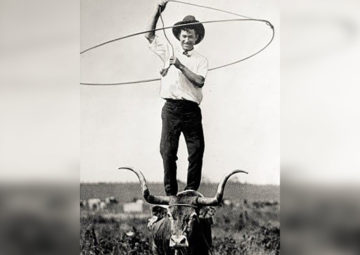 There is a scene in Fox’s 1930 comedy So This Is London in which Hiram Draper, played by Will Rogers, attempts to get a passport. When Hiram is unable to provide a birth certificate, the passport-office official inquires if he is an American citizen. Rogers, in his thick Oklahoman accent, responds: “I think I am. My folks are Indian. Both my mother and father had Cherokee blood in ’em. Born and raised in Indian Territory. Of course, I’m not one of these Americans whose ancestors come over on the Mayflower, but we met ’em when they landed.” It’s a great bit of comedy, a pre-Code jab pointing out an existential absurdity of America itself. It’s also a key to Rogers’s brand of humor and his positioning as a straight-talking outsider lodged in the eye of popular culture’s storm.
There is a scene in Fox’s 1930 comedy So This Is London in which Hiram Draper, played by Will Rogers, attempts to get a passport. When Hiram is unable to provide a birth certificate, the passport-office official inquires if he is an American citizen. Rogers, in his thick Oklahoman accent, responds: “I think I am. My folks are Indian. Both my mother and father had Cherokee blood in ’em. Born and raised in Indian Territory. Of course, I’m not one of these Americans whose ancestors come over on the Mayflower, but we met ’em when they landed.” It’s a great bit of comedy, a pre-Code jab pointing out an existential absurdity of America itself. It’s also a key to Rogers’s brand of humor and his positioning as a straight-talking outsider lodged in the eye of popular culture’s storm.